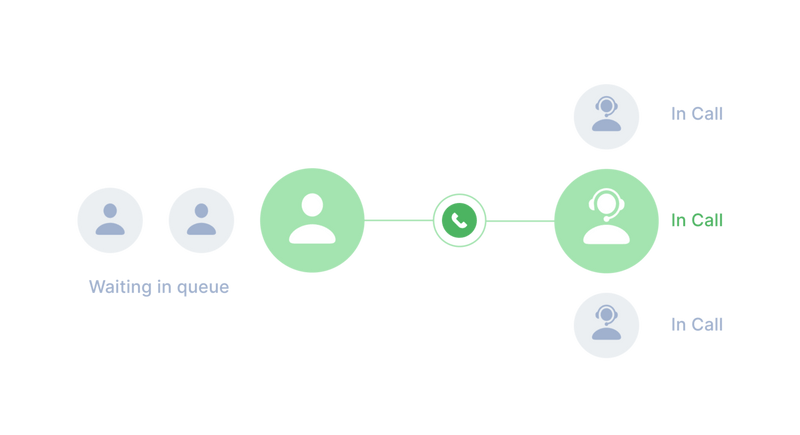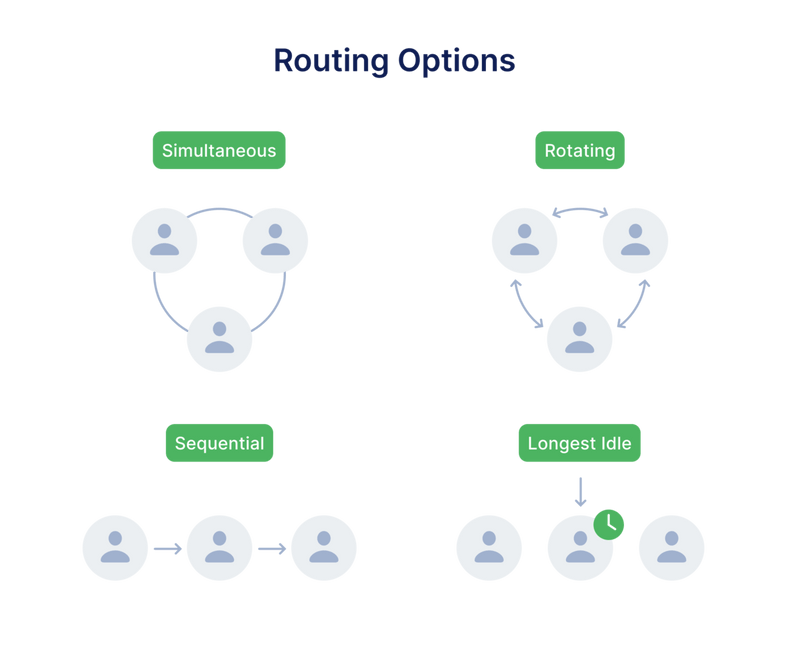Call Queues: What They Are and How They Can Help Your Business
If your office receives a large number of calls, congratulations! But while all those calls can be a sign that your organization is growing, if you don’t have a way to handle them smoothly, some of the calls — and all the associated business — could be lost. After all, nobody likes to be left waiting on a call for an indeterminate time or having to be redirected multiple times to get the help they need.
4 min read

Elizaveta Komarova
Oct 20, 2021

A call queue offers the better customer experience your organization needs. In this blog post, we will explain what a call queue is and show how it can be useful for both your customers and your teams using the example of Inperium Talk, a cloud-native business phone system.
What is a call queue?
A call queue is a method for organizing incoming calls that your operators can’t immediately pick up. In other words, a call queue is a virtual waiting line: Instead of getting a busy signal, callers are placed on hold, where they might hear music or pre-recorded messages about their estimated wait time and their other options, such as leaving a call queue voicemail instead of continuing to hold.
The queued calls are distributed to your agents or other employees as they become available. For example, the Inperium Talk call queue is managed on a “first come, first served” basis — as soon as a call queue operator is ready, the first caller in the line is automatically forwarded to that operator.

How can a call queue benefit your business?
A call queues offers multiple benefits, including the following:
- A phone queue helps ensure callers never get a busy signal or endless ringing without any answer;
- A good call queue function can reduce abandoned calls. If you provide callers with useful information while they’re waiting on hold, such as their position in the queue, it’s less likely that they will hang up and take their business elsewhere;
- Using a call queue enhances brand loyalty by demonstrating that your company is modern and professional;
- Call queue features help distribute the workload to your team members fairly;
- Call queue management can reduce staffing costs, since routed incoming calls properly will enable your call center specialists to handle a higher volume of inbound calls;
- You can improve customer satisfaction and first-contact resolution by offering a call-back option that allows callers to opt out of waiting altogether; instead, they will receive a call back from an agent who is equipped to address their concern. Be sure that the phone system you choose provides a call queue function!
How to configure and customize a call queue in Inperium Talk
Let’s have a quick look at how a cloud PBX call queue works using the example of Inperium Talk. Inperium Talk’s call queue enables you to automate the routing of calls from customers to your call agents. You can easily tailor the call queue options to meet your unique needs.
With Inperium Talk, you can set up multiple call queues. Here are some of the options you can specify for each:
-
Descriptive name;
-
The operators who will be in charge of answering incoming calls;
-
Time zone and operating hours, such as specific day/time settings or 24/7;
-
A call back option that enables customers to request a return call instead of having to wait their turn in the queue;
-
Maximum wait time before a caller hears an audio message that apologies that operators are still busy, suggests using the call-back option by pressing a certain key, and then disconnects;
-
Buffer time that an operator can use for a little rest before answering the next call;
-
Maximum number of calls in the queue and how to handle a call that exceeds the specified value: disconnect it or redirect it to voicemail, a different queue, or a specific user;
-
Audio for:
- Greetings;
- Waiting in a queue: music and verbal announcements like approximate wait time and current position in queue, and callback options;
- Re-routing to other call options or disconnecting;
- Voicemail greetings.
-
Method for distributing calls between operators:
- Simultaneous ring — An inbound call rings to all available agents at the same time and the caller is connected to the one who answers first;
- Sequential — An incoming call is directed to available specialists one by one in a given order;
- Rotating — Inbound calls are routed to available agents in a constantly changing order so that calls are distributed evenly;
- Longest idle — A call is directed to the specialist who has been idle for the longest time.

Conclusion
Call queue management can help you significantly improve your customers’ experience. But keep in mind managing your inbound calls in the most effective way requires regular analysis and improvement — be sure to modify your call routing and personalization as needed to improve the experience for customers and the productivity of your call center personnel. And of course, don’t forget to ask your customers for feedback on their experience reaching your operators.


